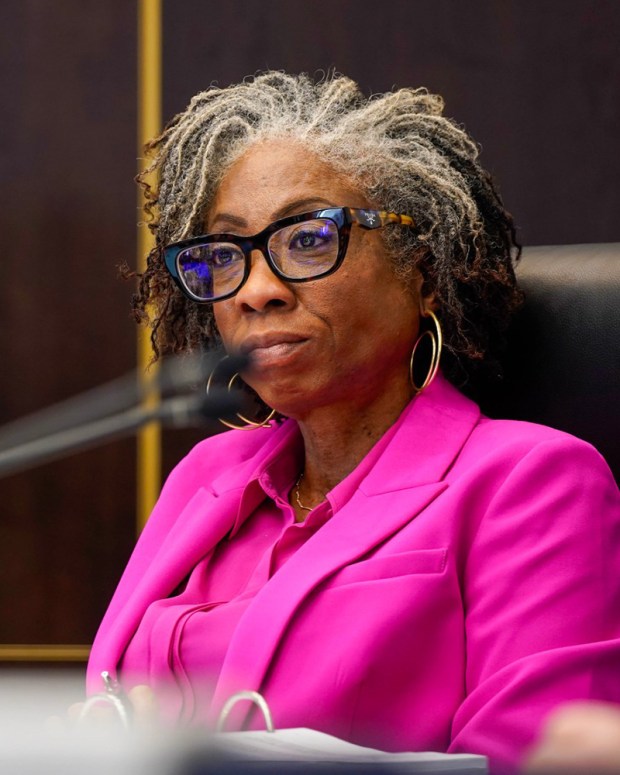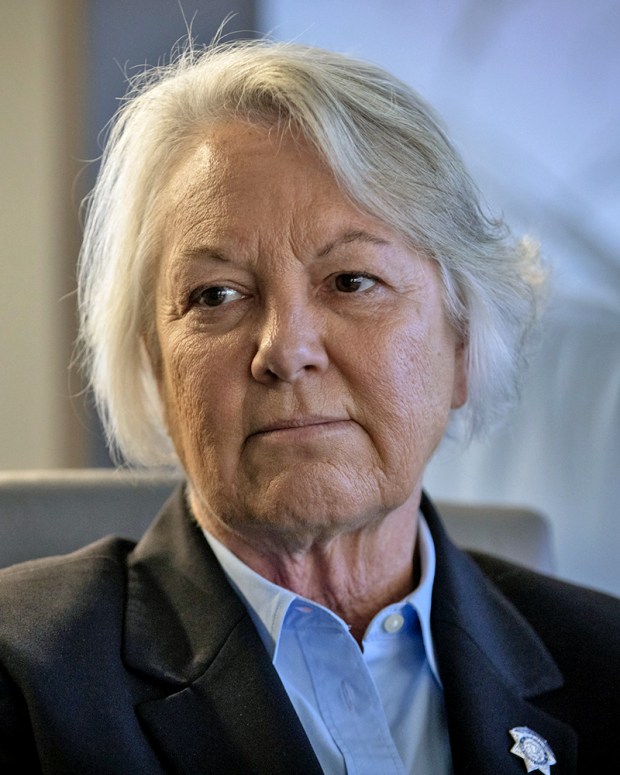With tens of millions of dollars paid to families of people who have died in San Diego County jails and more than a dozen lawsuits pending, Supervisor Monica Montgomery Steppe is proposing a new level of oversight for the elected sheriff.
Under a plan to be considered by the Board of Supervisors on Tuesday, the county would create an Office of Inspector General specifically to monitor the Sheriff’s Office.
The new agency would be run by a practicing attorney and empowered to open investigations as it sees fit, including into jail deaths, claims of excessive use of force, deputy misconduct and more. It would also be directed to monitor compliance with state and federal civil rights laws.
 San Diego County Supervisor Monica Montgomery Steppe in April 2025. (Alejandro Tamayo / UT file)
San Diego County Supervisor Monica Montgomery Steppe in April 2025. (Alejandro Tamayo / UT file)
“The OIG would provide oversight independent from the sheriff and a direct reporting relationship to the board to ensure fiscal, moral and ethical accountability,” Montgomery Steppe wrote in a letter to colleagues late last week.
The Office of Inspector General would complement the Citizens’ Law Enforcement Review Board, or CLERB, which already investigates in-custody deaths, deputy shootings and complaints against sheriff’s deputies and probation officers.
Montgomery Steppe said San Diego County needs to employ additional tools to ensure ongoing and continuous oversight of the Sheriff’s Office, which has recorded more than 250 in-custody deaths over the past two decades.
“The sheriff must be accountable to reform and demonstrate to the public that SDSO deputies are committed to the sheriff’s ‘organizational vision’ and ‘core values,’” she told her colleagues.
“The creation of the Office of Inspector General would be another tool to ensure that public safety is achieved in a transparent, fair and equitable manner,” the board letter added.
In a statement Friday, a spokesperson for Sheriff Kelly Martinez was less than enthusiastic about the proposed added scrutiny.
“At a time when the county is facing unprecedented budget restrictions and shortfalls, adding redundancy in oversight of the Sheriff’s Office continues a negative culture of looking backwards instead of forward in support of the hardworking men and women who are dedicated to public service,” Lt. David Collins said by email.
Earlier this year, Martinez publicly challenged the Board of Supervisors’ decision to expand CLERB’s jurisdiction to include oversight of jail medical providers. That plan was nonetheless approved last month on a 4-1 vote.
 San Diego County Sheriff Kelly Martinez in September 2025. (Ana Ramirez / UT file)
San Diego County Sheriff Kelly Martinez in September 2025. (Ana Ramirez / UT file)
The idea of creating an independent inspector general to oversee the elected county sheriff is not new.
Former CLERB executive officer Paul Parker pushed the proposal for more than a year before he resigned in frustration early last year. He said then that he was not convinced the Board of Supervisors was committed to imposing reforms on the Sheriff’s Office.
CLERB Chair MaryAnne Pintar said an Officer of Inspector General would have oversight authority that CLERB lacks.
“While CLERB can and does recommend policy and procedure changes, the powers of an OIG would far exceed ours,” she said. “An OIG would have wide latitude to oversee all incidents and operations, as well as conduct inspections, while CLERB’s authority is limited, and we don’t have the resources and staffing available to conduct inspections.”
Under the proposal to be considered Tuesday, the board would direct Chief Administrative Officer Ebony Shelton to meet with Acting County Counsel David Smith and return to supervisors in four months with a feasibility plan.
But Montgomery Steppe’s plan also says the details would be presented “in a confidential, attorney-client privileged memorandum” to the Board of Supervisors early next year.
“The feasibility plan must contain an implementation plan for the creation of a fully developed OIG office, including staffing, costs and funding sources,” the letter states.
David Loy is the legal director at the First Amendment Coalition, a nonprofit organization that advocates for government transparency. He said he is concerned that the proposal is due to be debated in secret.
“Unless they are going to go into closed session for legal advice, I don’t see why this shouldn’t be discussed in public,” he said.
 David Loy, legal director at the First Amendment Coalition, in 2022. (Ana Ramirez / UT file)
David Loy, legal director at the First Amendment Coalition, in 2022. (Ana Ramirez / UT file)
Loy said there is no question that state law gives county officials the legal authority to create inspectors general. If they had questions about that authority, or whether they might get sued for creating an OIG, they could debate that in private, he said.
“But on the face of this recommendation, it appears the request for advice goes beyond pure legal questions,” Loy said. “It looks like what’s being requested is not just legal advice but a feasibility plan that goes into costs and staffing.
“That sounds much more like policy than it does legal advice,” he said.
Montgomery Steppe said she asked county attorneys to conduct a legal review of the proposal to ensure it meets all compliance requirements. She noted this is uncharted territory for the county and contrasted it with her time on the San Diego City Council, where legal opinions were standard for most new initiatives.
She emphasized that the step is the start of an exploratory process. Because the board letter identifies the inspector general as special counsel to both the Board of Supervisors and CLERB, she said that could raise legal issues. This review is meant to address those issues before moving forward.
Montgomery Steppe said she’s working with county counsel “to make sure that the public gets exactly what it needs and more as we go through this process.”
Montgomery Steppe said the model, as she envisions it, would take a proactive approach. She noted that the sheriff has publicly called for oversight that can monitor processes in real time to help save lives and ensure deputies follow policy and the law.
“That is exactly what an OIG does,” she said. “We can monitor processes as we go along, and we can have accountability, checks and balances as we go along, instead of always having a reactive sort of way to respond to what is going on in our jails and in our communities.”
San Diego County jails have had one of the highest mortality rates in California for years — 185 deaths between 2006 and 2020, according to a state audit released in 2022, and 69 others since the start of 2021, records show.
Many of the deaths could have been prevented with more effective medical and mental health treatment in county jails, the families of people who have died in jail have argued in lawsuits against the county.
Two San Diego County jail deaths in recent years have been ruled homicides by the Medical Examiner’s Office due to the lack of care the men received while in the sheriff’s custody.
The litigation has cost taxpayers tens of millions of dollars, and the costs keep piling up.
In July 2024, the county agreed to a $14 million settlement with the family of Elisa Serna, who died at the Las Colinas women’s jail in 2019 after sheriff’s officials failed to properly treat her for alcohol and drug withdrawal.
Months later, supervisors approved a nearly $5 million settlement with the family of Michael Wilson, who died from lack of treatment for a heart condition even though a judge specifically directed that he get specialized medical care.
And just this summer, the county agreed to pay $4 million to the family of Lester Marroquin, who died by suicide even though he was supposed to be strictly monitored.
Lawyers for San Diego County are defending at least two dozen similar wrongful-death and negligence claims. The county also is defending a class-action case seeking to force changes in Sheriff’s Office jail practices.

